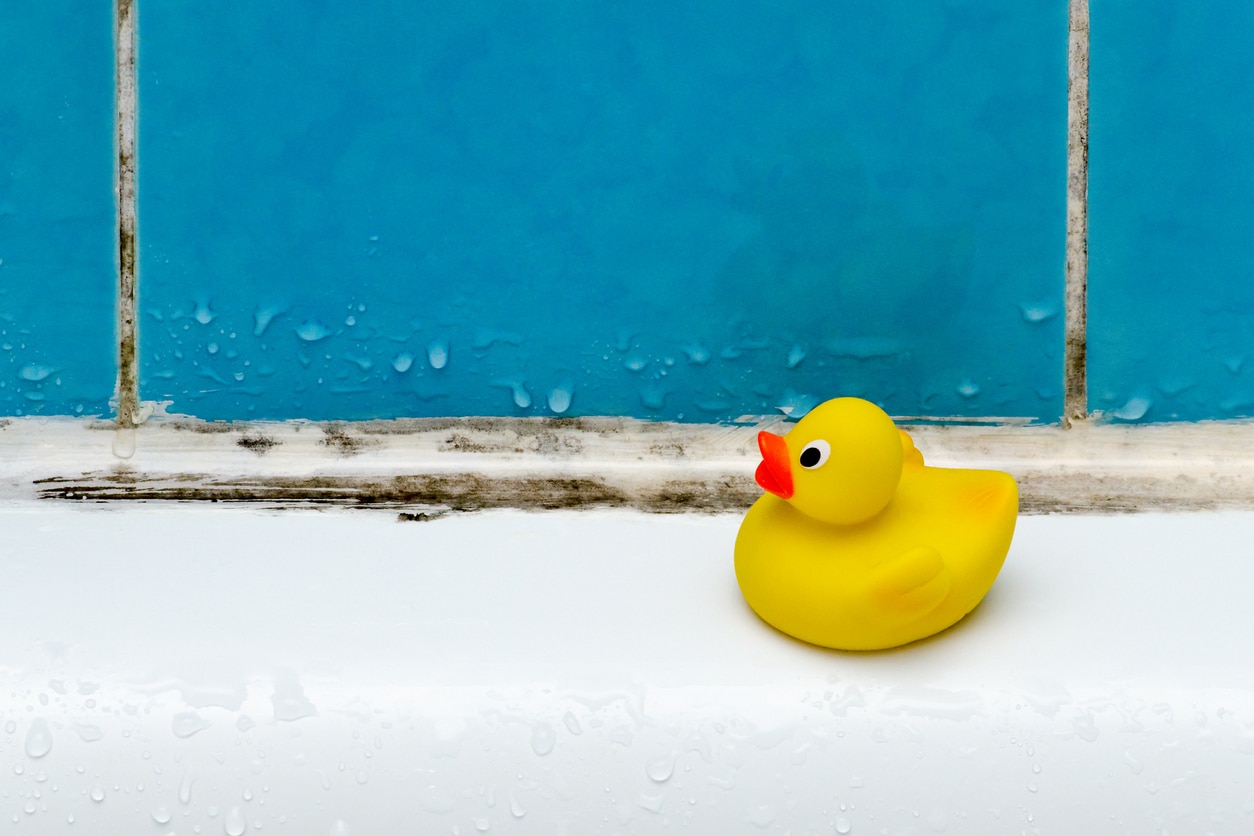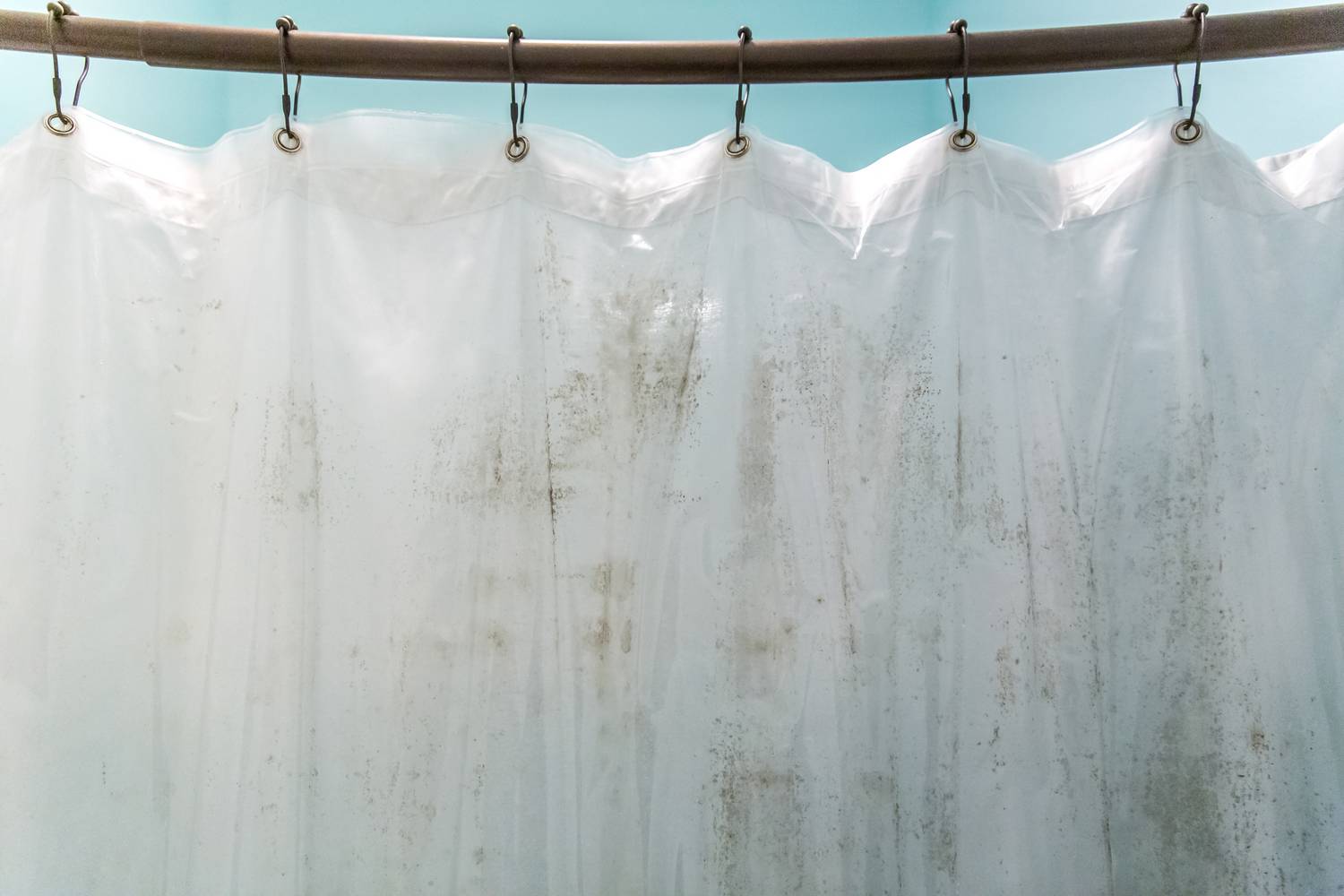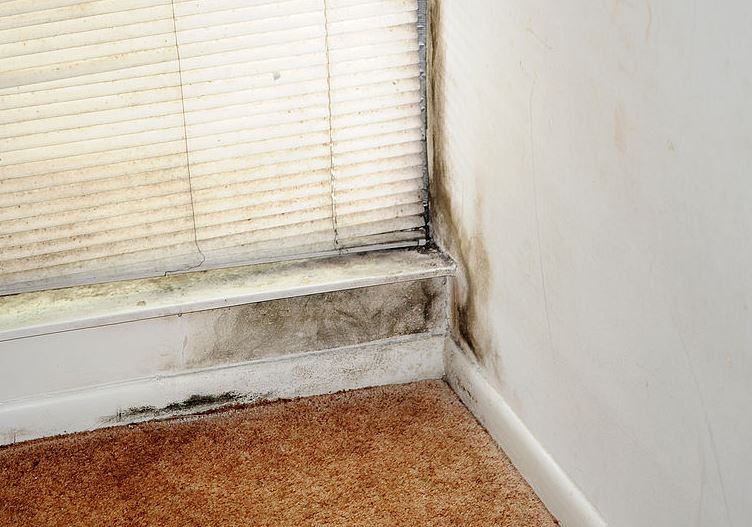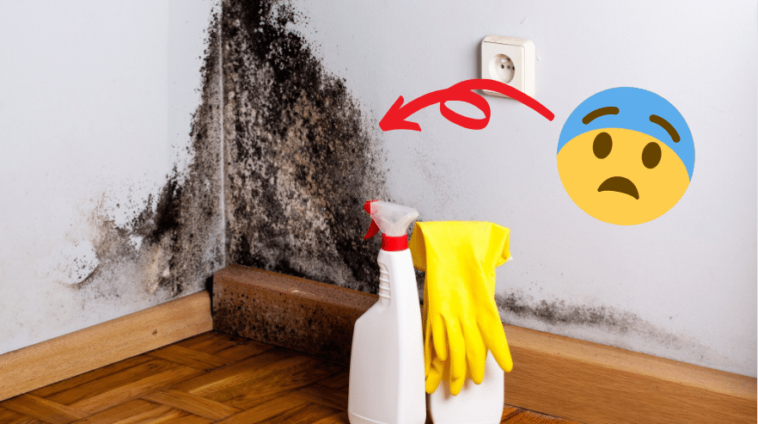Mold is often caused by humidity in the home. They can grow on any damp surface such as walls, ceilings, carpets, furniture and even clothing, especially in rooms prone to excess humidity such as the bathroom, basement or the kitchen and if there are water leaks or poor ventilation (for example no window in the bathroom). Fortunately, it is possible to remove mold stains from all surfaces by adapting the household products used so as not to damage the treated surface.
Whether it’s walls, grout, moldy clothes in a closet, the ceiling or shower walls, you’re sure to find a solution to remove stubborn stains and avoid health problems, all without using harmful bleach or commercial chemical cleaning products that are dangerous to your health.
1) How to clean mold from fabric
Our closets are not very ventilated places. In addition, we often store items that absorb humidity. Thus, the towels in the bathroom storage like the clothes in the wardrobe can find themselves covered in black stains (not to mention bad odors!). While there are many ways to go about cleaning moldy fabric, the best stain-fighting trick is to mix a packet of baking powder with toothpaste. You can then use this mixture to scrub the stains on fabric with an old toothbrush. Then all you have to do is let it work and put it all in the washing machine.
2) How to wash tile joints covered in mold stains

Even if you wipe the wall and floor when the tiles are damp, moisture can still find its way into the joints between the tiles. For easy, quick and economical cleaning, mix a glass of white vinegar (antifungal, stain remover and deodorizer) and two tablespoons of baking soda, then take a little of this mixture to scrub the joints (as well as the tiles). Then leave it on for around fifteen minutes before rinsing and drying. If that’s not enough, you can mix baking soda with hydrogen peroxide and a few drops of dishwashing liquid to form a soft paste to rub on the stains before leaving to act and rinsing.
If your seals are silicone, you can also use grapefruit seed extract. This natural antifungal and antibacterial will in fact allow them to be cleaned without attacking or damaging them. In addition, it will prevent the return of mold. To do this, dilute 10 drops in a cup of water, spray on the surfaces to be treated and leave to act before rubbing and rinsing.
3) And if there is mold on the walls, what should I do?
Ici, the cleaning method will mainly depend on the type of wall. In fact, you can most often mix 200 ml of water and 300 ml of white vinegar in a sprayer to spray the areas to be treated. Then all you have to do is leave it on for half a day before rubbing and drying the cleaned area. However, this solution is not not possible on a stone or wooden wall which do not always go well with vinegar. In this case, instead choose a mixture made with a quarter cup of baking soda and a cup of hot water. Then proceed as explained earlier.
4) How to remove mold from the shower curtain?

Did you know that the shower curtain can be machine washed? This may be enough to carry out a thorough cleaning. However, be careful to do not exceed 40°C for a plastic curtain. For a perfect result before washing, you can consider using black soap to remove a mold stain. To remove stains, simply rub with a sponge. Leave for 10 minutes, then slide the curtain into the machine to start a wash cycle. Do not hesitate to add half a cup of bicarbonate (stain remover and deodorizer) to your laundry for optimal effectiveness. Additionally, bring two large towels to add to the drum to protect the curtain during cleaning.
Good to know: this tip also works on carpets!
5) Eliminate mold stains on exterior wood
Garden furniture forgotten outside ends up covered in mold stains? Leave to macerate thyme (fungicide and anti-infective) in household alcohol, then filter. Then, use this liquid on an inconspicuous corner to check that it does not damage the wood. You can then use a sponge soaked in this mixture to clean the damaged wood.
The most important thing is to treat mold at the source!

Mold keeps coming back? This shows that it is necessary take the problem at the source to resolve it sustainably and effectively. Indeed, cleaning only addresses the symptom and your health and the cleanliness of the house will not see any relief until you take action to resolve the problems associated with high humidity. So make some good resolutions.
–First of all, identify the source of moisture. Mold can in fact come from water damage, a water leak (visible or invisible) or flooding. The house may also have plumbing or roofing problems. Sometimes, it can also be exposed to water infiltration or even condensation problems. Check the condition of your VMC and repair the source of humidity that is causing the mold.
-Black spots can also come from a lack of ventilation. Use a dehumidifier to help reduce humidity. If possible, consider work to add a window in the bathroom if it is missing one. If necessary, redo the coating or the joints and throw away any heavily soiled objects that cleaning cannot completely remove.
-After cleaning or using them, make sure surfaces are completely dry. This will help prevent mold from growing again. Use a clean, dry cloth to dry damp surfaces regularly.
-Is the mold too extensive or has it spread to hard-to-reach areas? It may then be preferable to call a professional to remove them. He will also be able to identify leaks that are not visible to the naked eye and provide advice on how to restore normal humidity levels.
If you are sensitive to allergies, have asthma, or experience symptoms such as itching, rash, coughing, or sneezing, also consider seeking medical attention. Traces of mold should not be taken lightly.


